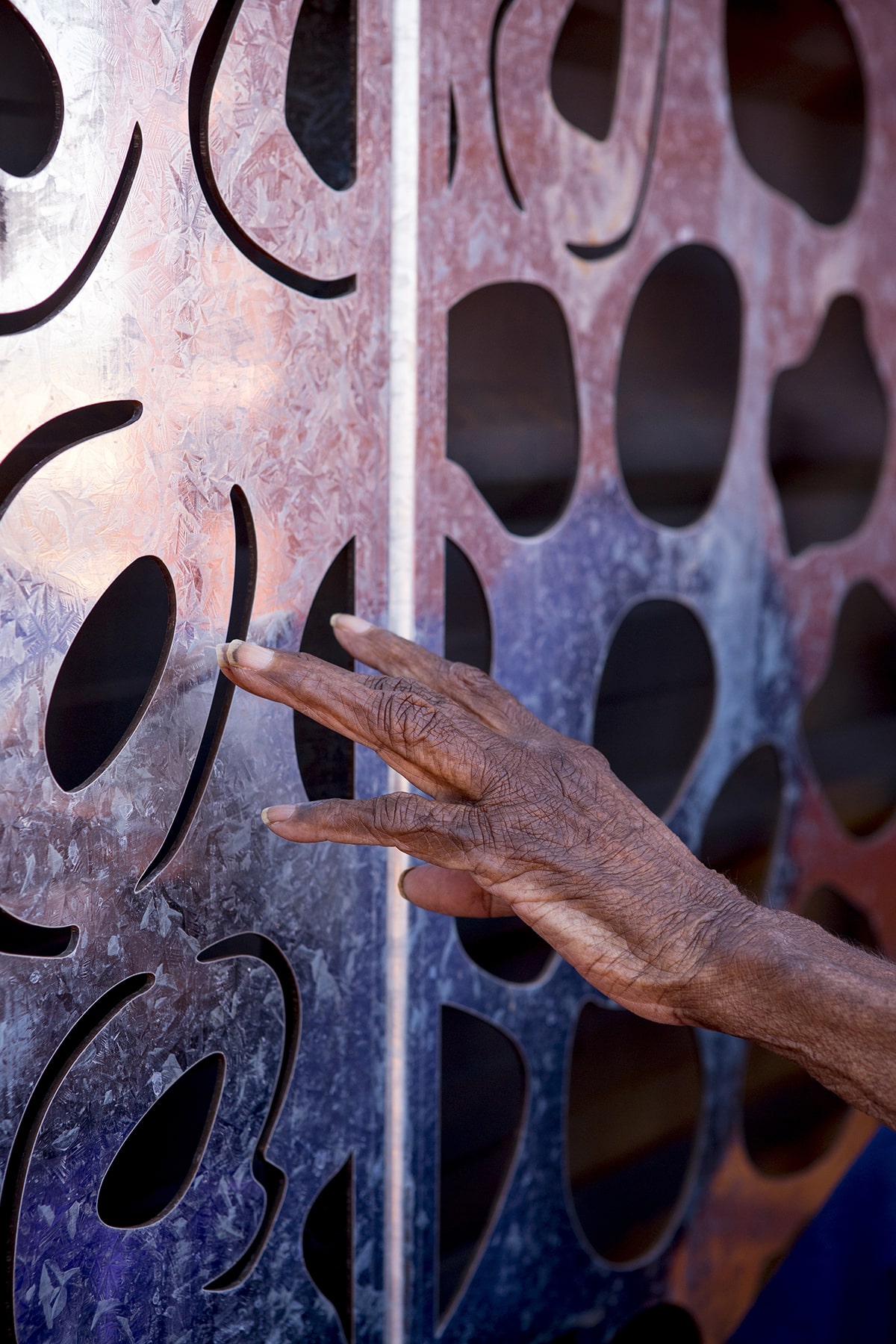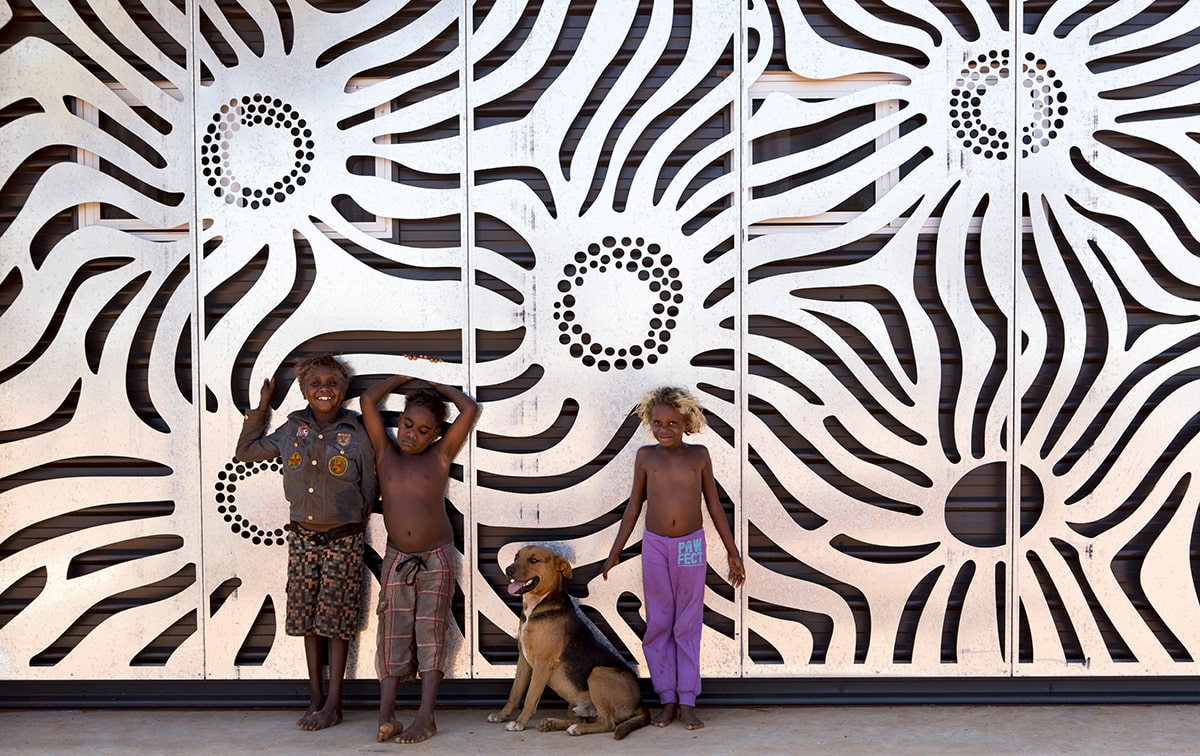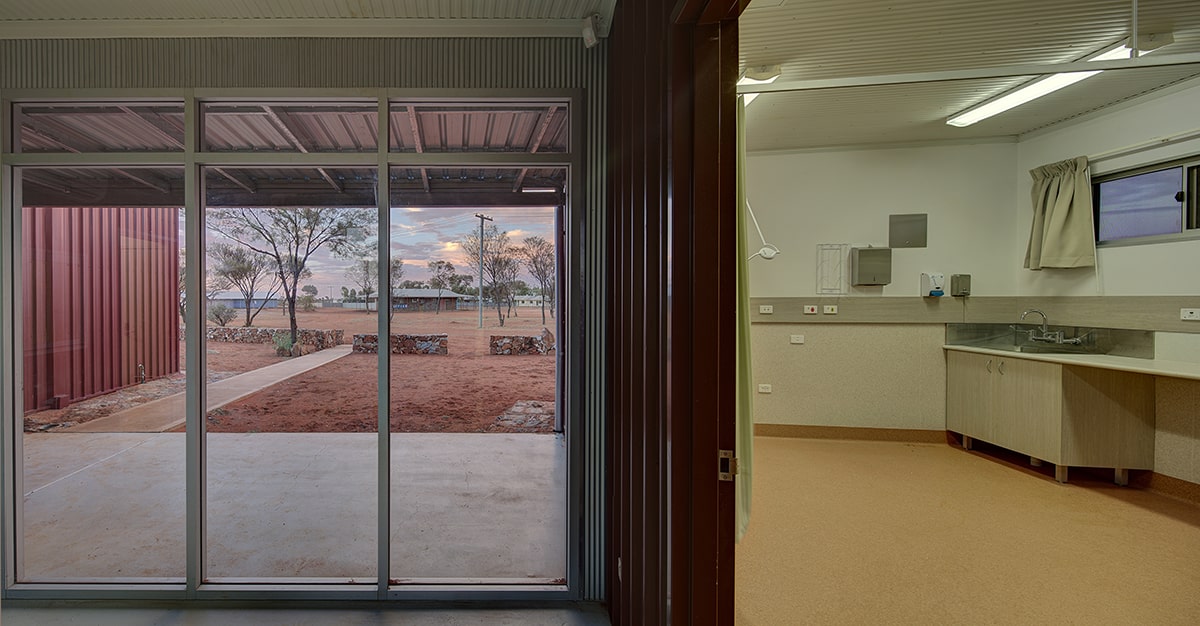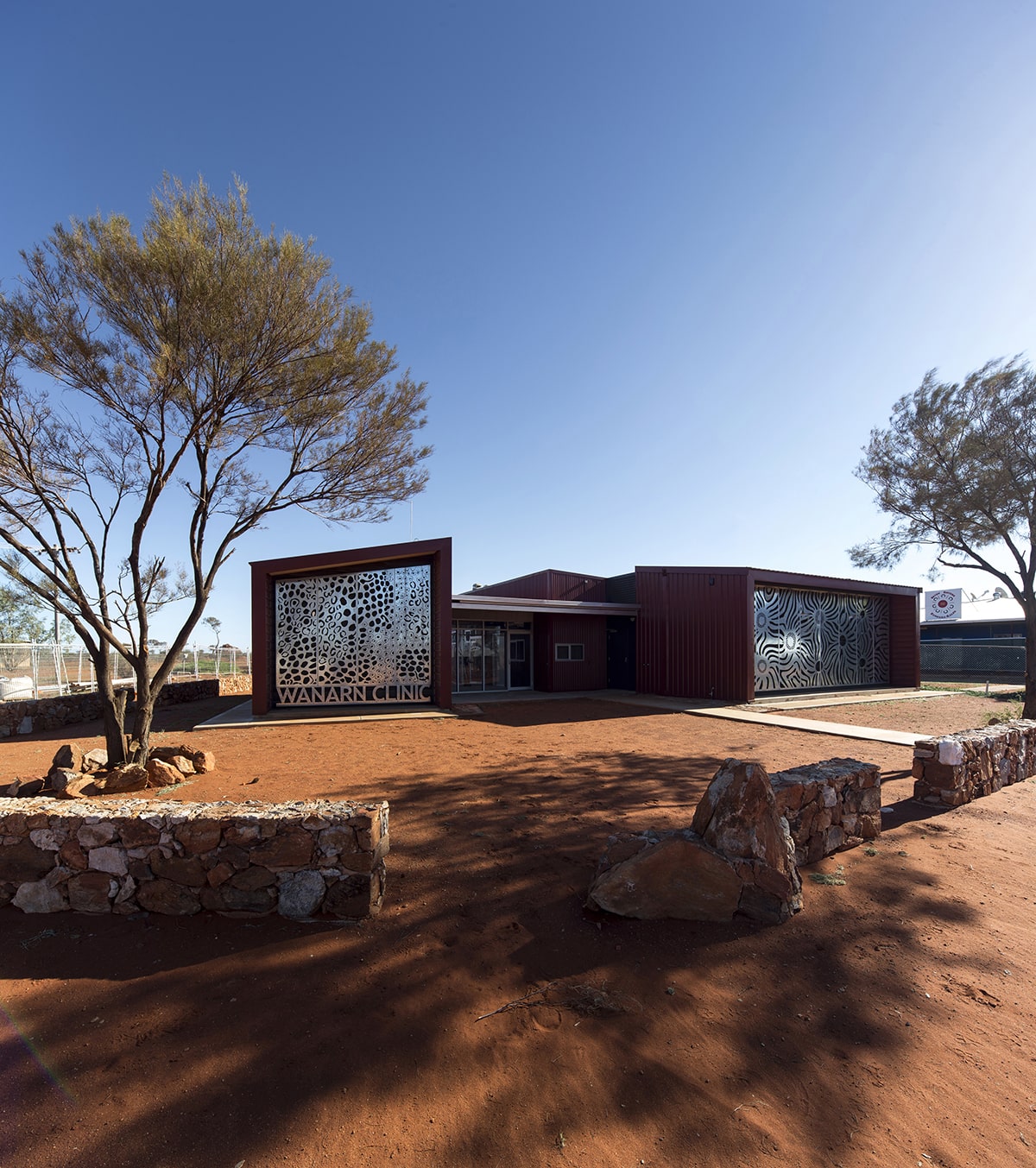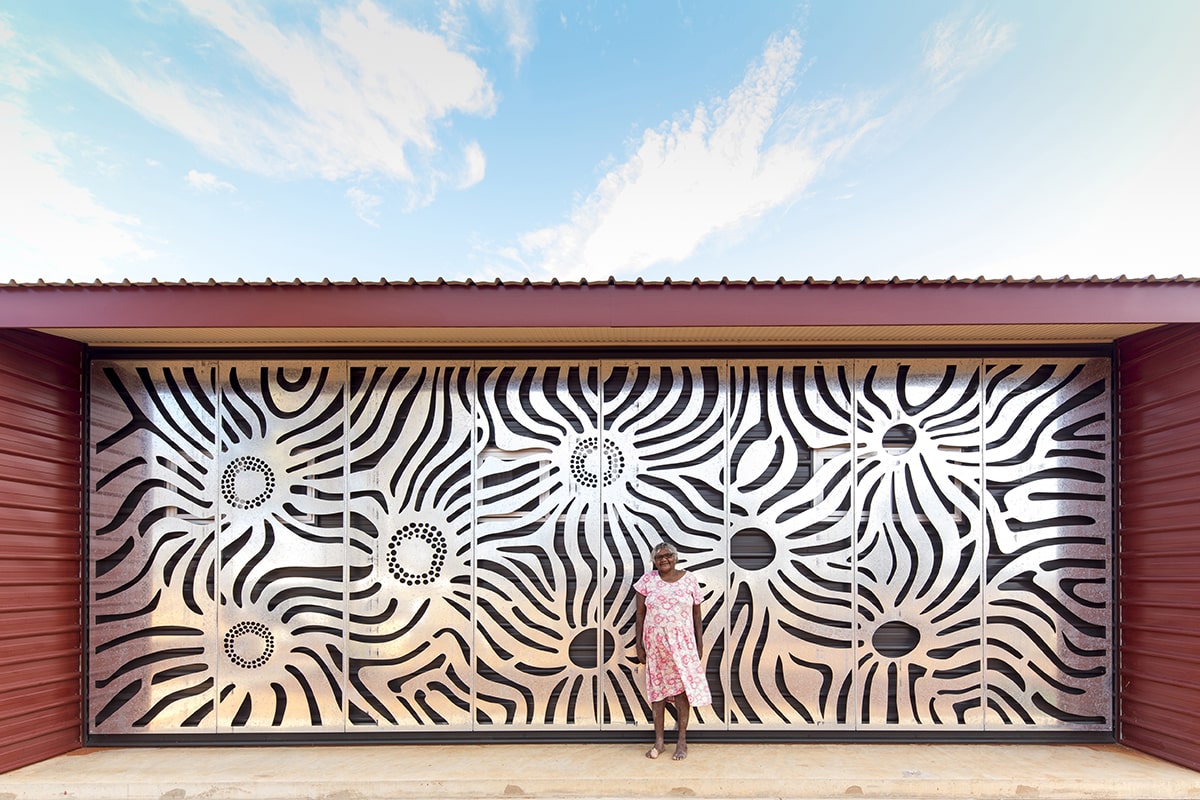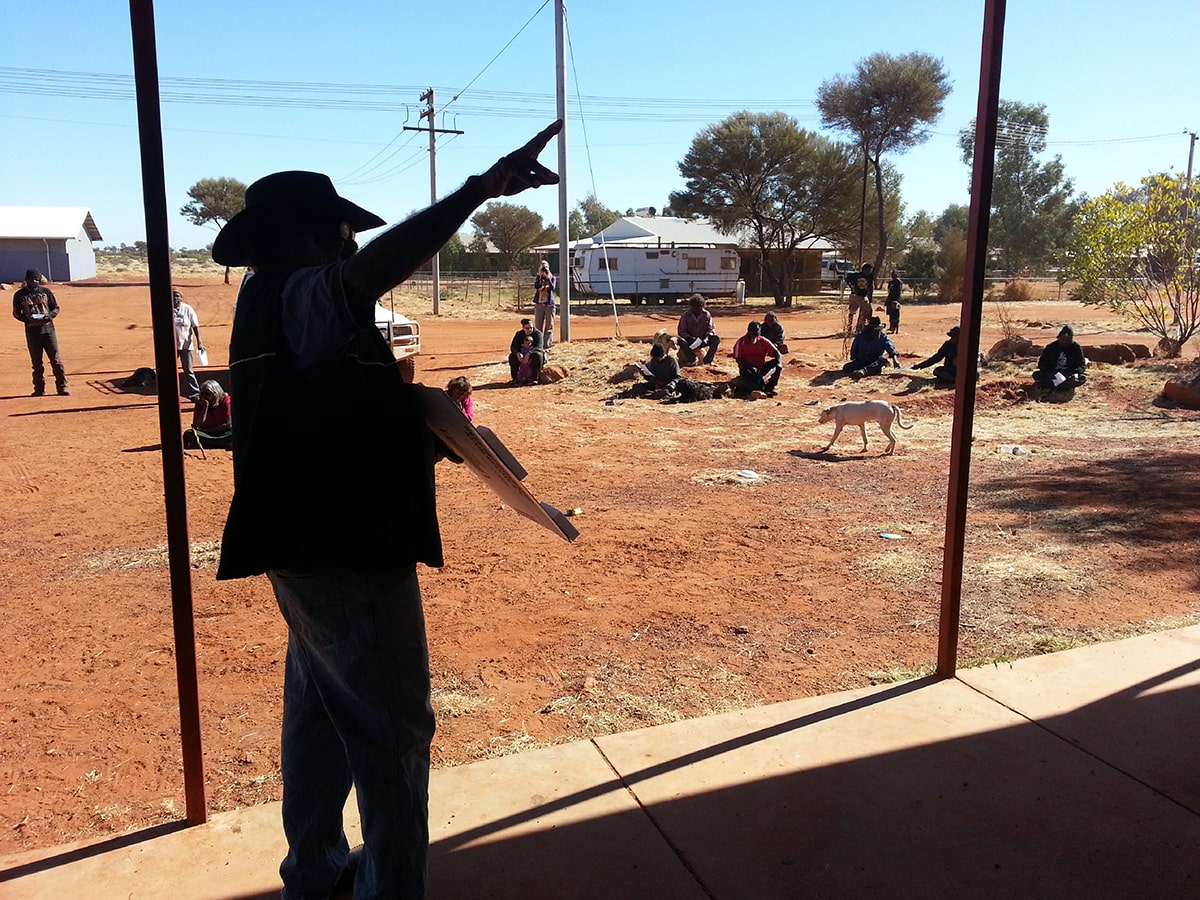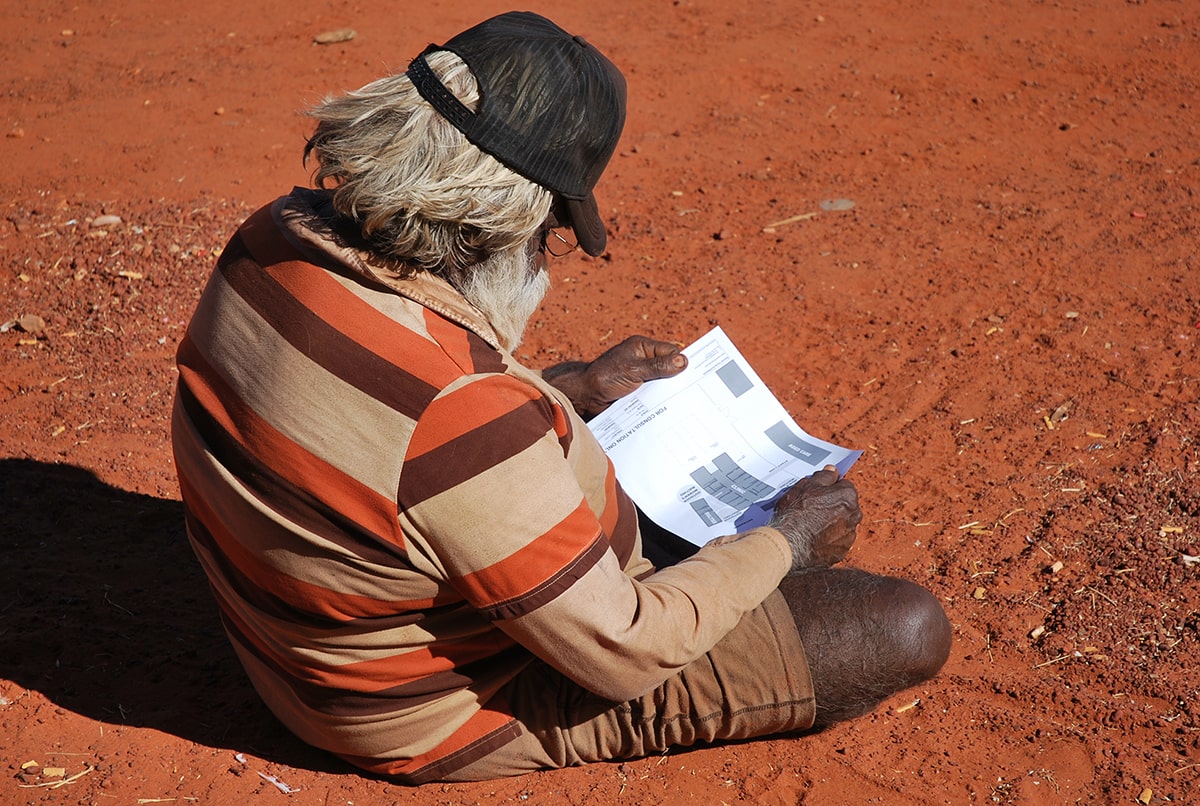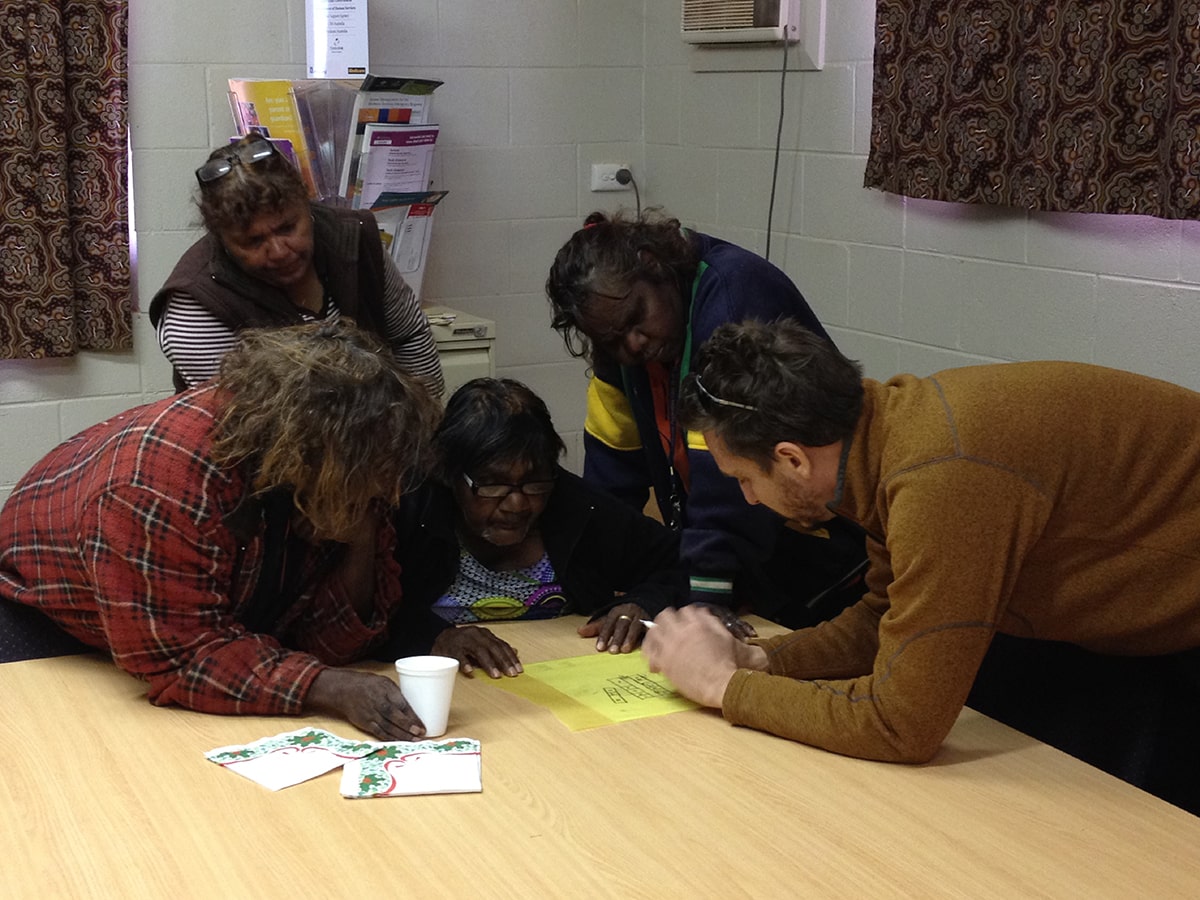Wanarn Clinic

Wanarn Clinic is a treatment venue operated by the Ngaanyatjarra Health Service, which provides professional and culturally appropriate healthcare to the Ngaanyatjarra people in Western Australia. The service is a community organisation with an Indigenous board.
The clinic is located in the Gibson Desert, one of the most remote places in the world – almost 900 kilometres west of Alice Springs and more than 1,500 kilometres northeast of Perth – and services a population of about 200 in the immediate vicinity and approximately 2,000 largely nomadic Indigenous Australians in the surrounding Ngaanyatjarra region.
THE BRIEF
The client, Ngaanyatjarra Health Service, required a healthcare clinic that would service an isolated community while paying respect to people, land and culture. Community ownership of the facility was paramount.
Located in the desert, Wanarn Clinic also had to resist high temperatures and dusty conditions but low-cost to run due to limited resources.
The Federal Government set a modest budget of $1.8 million for the facility with most of the materials and labour to be sourced from several hundred kilometres away.
THE PROCESS
Its was important to the community that the clinic blended in with the land. That dictated its compact size as well as its earth-coloured cladding.
Because of the cultural and environmental requirements of the clinic, architect David Kaunitz decided against a European-style building, doing away with verandas, gutters, awnings and eaves. Saving on these features allowed Kaunitz Yeung to improve insulation to prevent overheating.
The inclusion of art screens designed by local artists has also created a sense of pride in the community. Not only do they counter the utilitarian built environment of a typical clinic, their incorporation enables the building to pay respect to elders, artists and culture, which enriches the community.
CONSULTATION
Kaunitz spent three months living in the Ngaanyatjarra region during the design process to talk to specific user groups, from residents in the township to those from the nomadic community. This involved both formal forums and impromptu ‘yarning’ under a tree, on the way to the shop or while hunting rabbit, which meant better inclusion of the nomadic community, who are not always comfortable speaking within the mob.
Listening to and understanding community needs enriched the architecture by making it more appropriate to place and culture in many small ways, from having outdoor waiting areas to the orientation of the clinic.
Hiring from the community also enhanced the cultural value of the clinic. Local workers chose material for a stone wall – designed to decrease dust infiltration – from specific sites, imbuing culture into functionality.
There were also important health and community outcomes that came from this process. Cost savings through detailed consultation enabled the inclusion of a two-chair dialysis unit. Where the original budget excluded renal dialysis, the final build cost was $1.6 million including a dialysis facility. This meant patients could receive treatment on-country instead of having to travel long distances, separated from their community and homelands.
PRINCIPLES OF SUSTAINABILITY
Detailed physical and environmental modelling guided the careful orientation of the main building forms as well as the location of the north-orientated entry canopy and art shade screens to reduce the effects of heat and dust. Maximising building insulation also ensured superior thermal performance in the harsh desert environment.
INTERESTING FACT
The aluminium art screens, designed by two female Warakurna artists, depict the Dreaming of the Seven Sisters, a Dreamtime narrative associated with the Pleiades constellation.
TESTIMONIAL
The public and cultural benefit “of the health provision cannot be overstated, including renal dialysis which was only possible through careful cost savings. Hundreds have been lost and now those elders who remain can be brought home to the remotest of locations.” Brett Cowling, Former CEO Ngaanyatjarra Health Service
LOCATION:
Ngaanyatjarra Lands - Wanarn, Western Australia
CLIENT:
Ngaanyatjarra Health Service
- 2016 European Healthcare Design Awards: Winner Design for Health & Wellness
- 2015 Leading European Architecture Forum Award: Winner Best Sustainable Building of the Year
- 2015 Western Australian Institute of Architects: Commendation Best Public Architectcure Award
CREDITS:
Funding body: Australian Department of Health, Client: Brett Cowling, CEO Ngaanyatjarra Health Service, Project Facilitator: Valerie Nullett, WSP, Art Screen Design Consultant: Vashti Gonda, Di Emme Creative Solutions, Wanarn Community Artists: Mrs Bates and Mrs Ward, Source Art Centre: Warakurna Art Centre, Structural Engineer: Bruce Hutchison, Chapman Hutchison Engineers, Building Services Engineers: Lucid Consulting Engineers, QS: Charles Wright, QS Services, Photographer: Brett Boardman, Contractors: Murray River North

